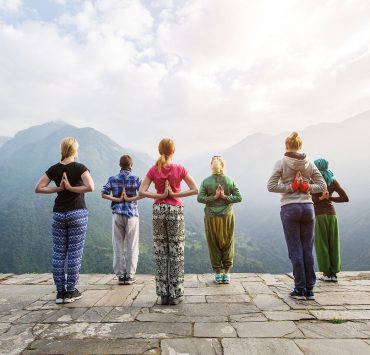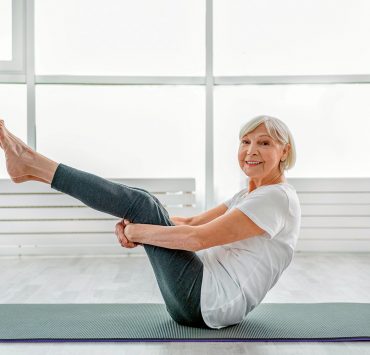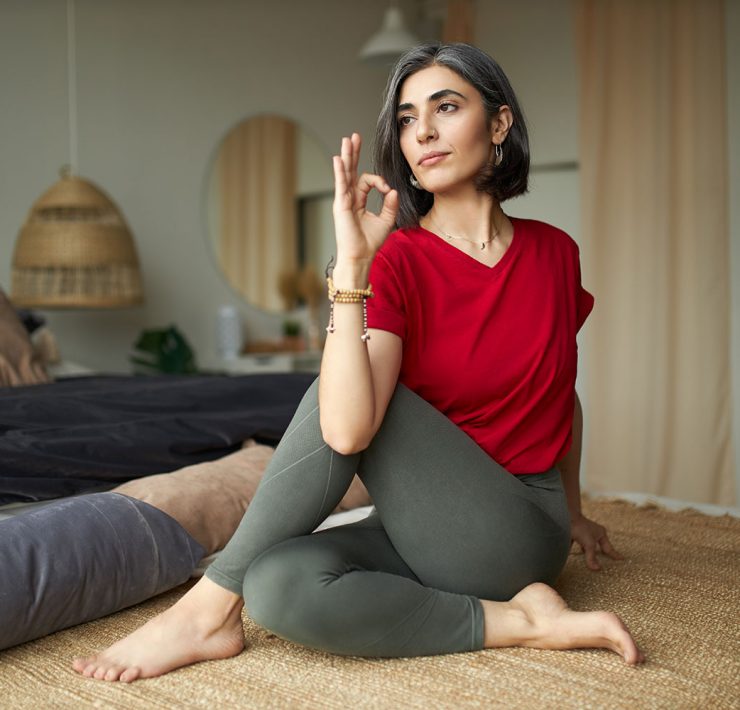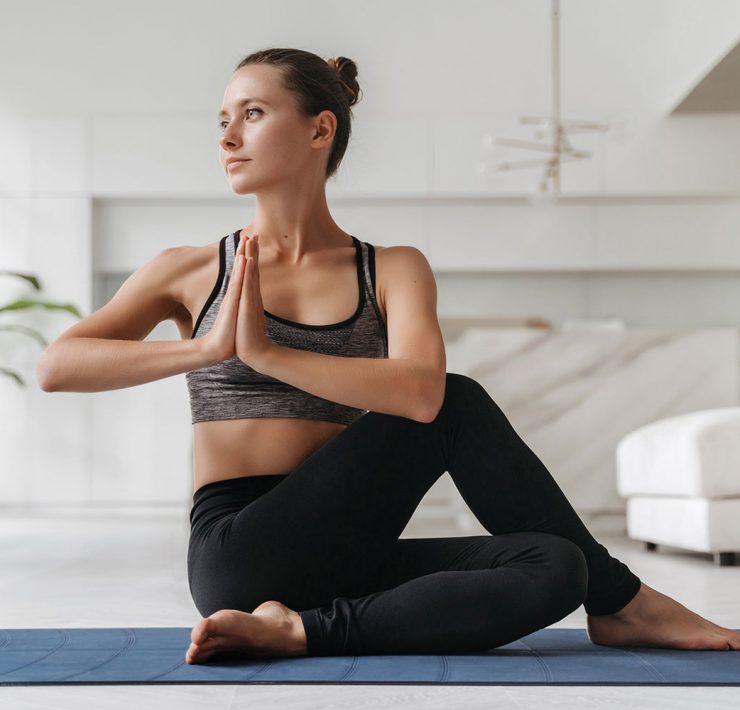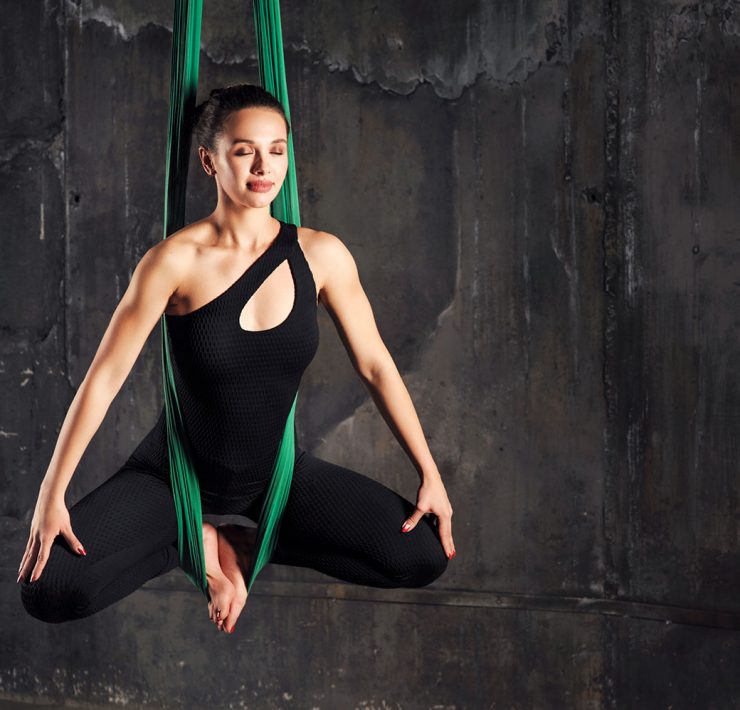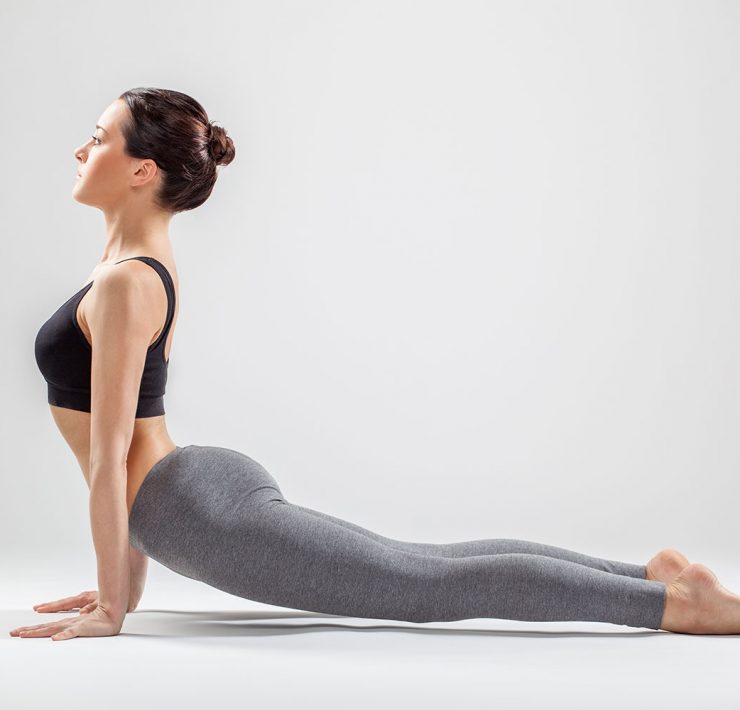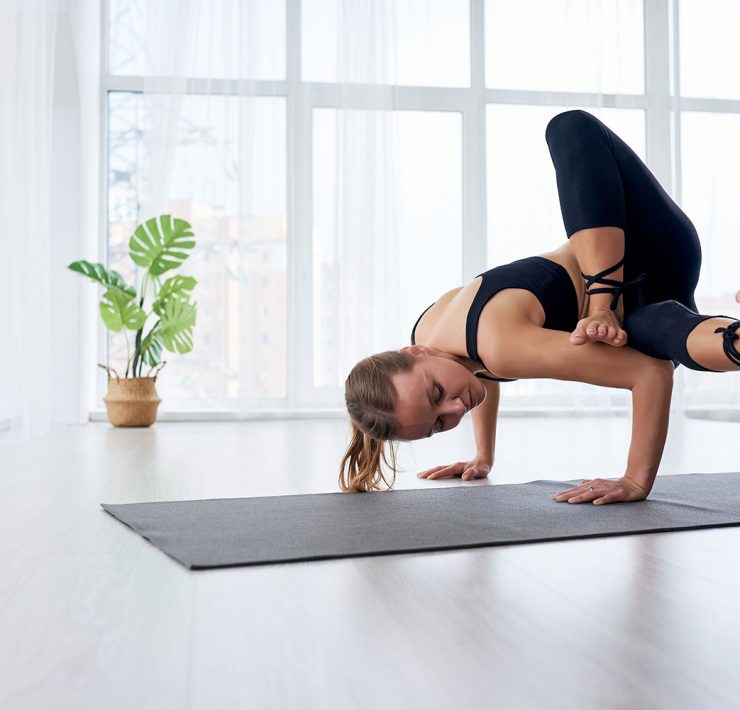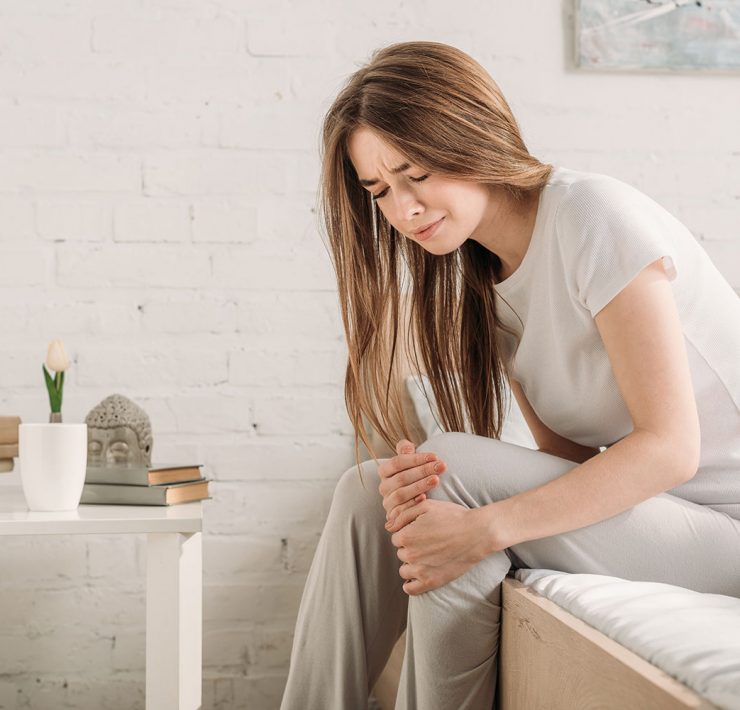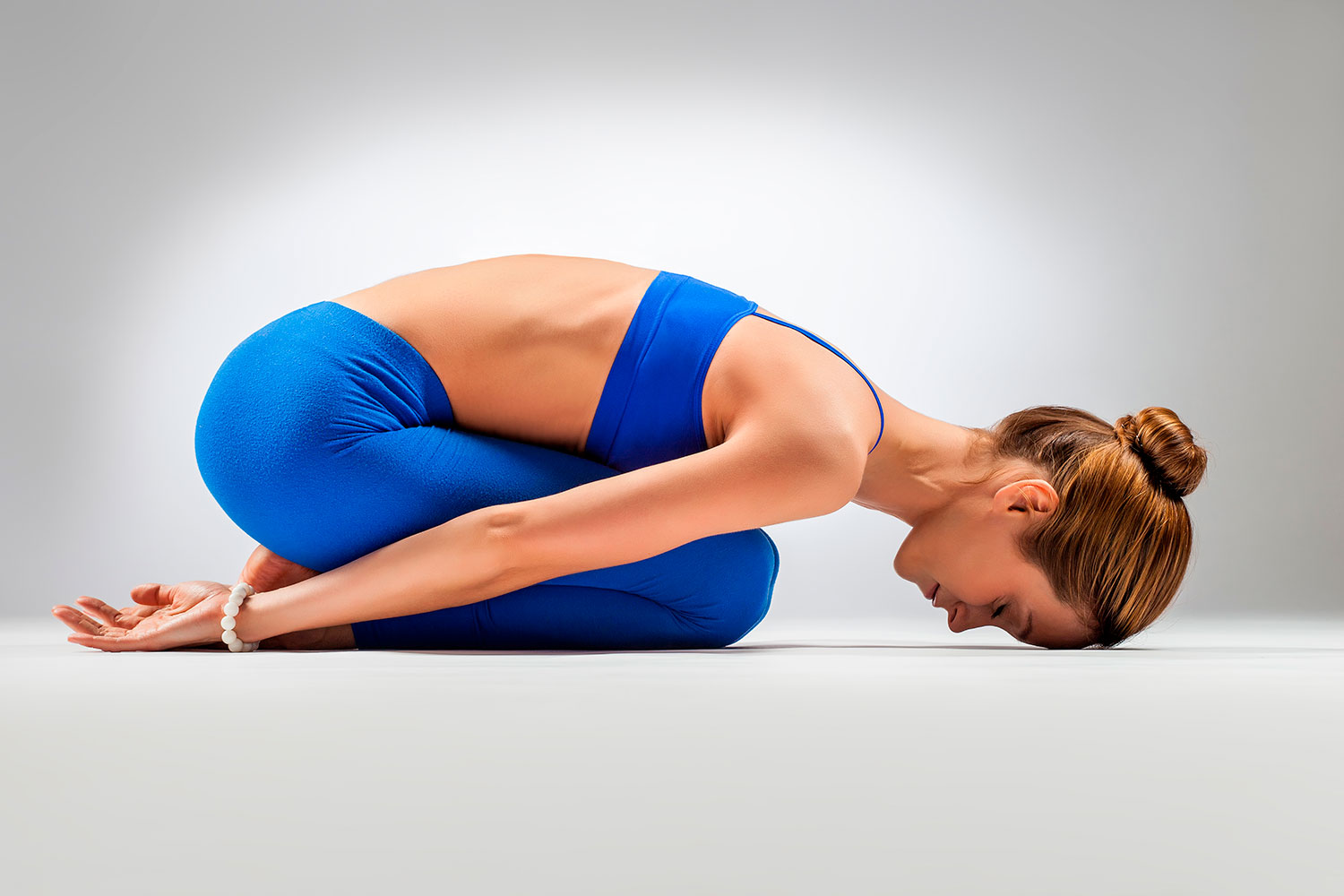
Rose graduated with a degree in Anthropology, which takes her…
Yoga can be an incredible tool when it comes to calming stress and anxiety. It is believed that over 40 million American adults are living with clinical anxiety disorders affecting their every day lives. An even greater number struggle with lower level anxiety and stress that still impact their daily interactions. It is not surprise that people often come to yoga searching for answers on how to calm their minds.
What are stress and anxiety?
To understand how yoga can benefit those with anxiety and stress, it is essential to understand the disorders themselves.
Anxiety
Anxiety is a normal emotion that can in some people spiral out of control. When anxiety becomes an overwhelming feeling, occurring on a daily basis and in disproportion to the circumstances, it can be classified as an anxiety disorder. There are psychological effects such as worry, nervousness, fear, and more. There are also physical symptoms ranging from tremors, sweating, irregular heart rate, tension, digestive troubles, and more.
Stress
Stress, like anxiety, is a normal emotional state. However, when it becomes overwhelming or disproportionate to the circumstances, it will impact someone’s life in a negative way. When a person experiences stress, their body is in ‘fight or flight’ mode, i.e. the sympathetic nervous system becomes overactive. Their body releases stress hormones including adrenaline, cortisol, and norepinephrine. This leads to similar physical feelings as anxiety, including an upset stomach, tension, increased blood pressure, and more.
How Yoga Calms Stress and Anxiety

Stress and anxiety are obviously serious conditions that can seriously impact a person’s engagement in every day life. Both of these disorders have a root in imbalances in the nervous system. Yoga can be a useful aid for calming stress and anxiety because of its benefits in balancing the nervous systems and regulating the HPA axis (a system which controls the release of stress hormones). This is primarily done through pranayama (breathing) benefits which trigger the parasympathetic nervous system, letting the body trade ‘fight or flight’ for ‘rest and digest.’ In time, this regulates the stress response, so the body stays more balanced and is less likely to release cortisol, adrenaline, and norepinephrine in situations where this is an overreaction.
A 20 Minute Yoga Flow to Calm Stress and Anxiety
Not all yoga poses carry the same benefits. In fact, there is a huge variety of yoga poses and each one is unique in its potential to have different physical and emotional benefits. When approaching yoga with the aim to calm stress and anxiety, it will be important to focus on restorative postures. It will also be essential to maintain pranayama (breathing) throughout the entire practice. If breath ever gets ragged or becomes difficult to maintain, then that is the time to take a step back into a resting pose. The following sequence is an example of a short yoga flow to calm stress and anxiety.
Sukhasana — Easy Pose

Start your practice in a gentle restorative posture, such as easy pose (sukhasana). To practice easy pose, kneel on your mat with your knees together and toes untucked. Sit back on your heels. Bring the palms open on the knees. Relax your shoulders and close your eyes, gently tucking your chin toward the notch in your neck. Breathe deeply in and out through the nose here, for 10 breath cycles.
Adho Mukha Svanasana — Downward Facing Dog Pose

From easy pose, open your eyes and plant your palms firmly on the mat, shoulder width apart. You should now be kneeling on all fours. Inhale, tuck your toes and lift your hips. Press back to downward facing dog. In this pose, your heels are reaching toward the mat, although they may not reach. Try to press evenly between your upper and lower bodies. Let your neck relax and your head hang heavily between your upper arms. Maybe bicycle your legs here, releasing any tension or stiffness in each leg. Stay in downward facing dog pose for 5-10 breath cycles.
Virabhadrasana II — Warrior II Pose

From downward facing dog, inhale and lift your right leg back. Exhale, bend the knee, and bring your right foot all the way forward so it is planted between the palms. Exhale, and planting the back (left) foot parallel to the back of the mat, windmill your arms up so you are standing in warrior II (virabhadrasana II). In this pose, your front heel is aligned with the arch of your back foot. Your front knee is tracking over the ankles, and the knee is in a right angle. Your hips are open to the side of the room. Arms are outstretched to the front and back of the room, as you gaze softly over your front finger tips. Breathe here for 5-10 counts, noticing how the pose changes and opens.
Viparita Virabhadrasana — Reverse Warrior Pose

From warrior II pose, inhale and reach energy through your back finger tips. Exhale and plant the back hand on your back leg. The hand may be planted in a comfortable position for your body: on the thigh, above the knee, below the knee. Avoid planting the hand actually on the knee, in order to protect your joint. Reach your front arm up and overhead, and follow your fingertips with your gaze. As you build heat and openness in this posture, maintain a deep 90 degree bend in your front knee. Stay here for 5-10 breath counts, finding length on each inhale, and deepening into the gentle back bend with each exhale.
Prasarita Padottanasana — Wide Legged Standing Forward Fold Pose

From reverse warrior, inhale the torso back up to straight, whilst straightening the front leg. Pivot the front foot in so it is parallel to the back foot. Your body should now be facing the side wall, with the legs in a wide stance. There are multiple variations here on options for your arms and hand clasp. For a particularly calming option that may help in opening the chest and aiding in deep breathing, clasp the hands behind you and squeeze the shoulder blades together. Inhale and open the heart, and exhale and fold forward. As you fold forward, aim to hinge from the hips rather than rounding the spine. Think of your pelvis rotating over your thigh bones, and maintain the straight line of your back. Keeping your hands clasped, let them fall open behind your head. Lift the knee caps and keep the thighs engaged in this pose, feeling the intense stretch along the backs of your legs. Breathe here for 10 breath counts. When you are ready to come out of the pose, unclasp your hands and bring your hands to your hips. On an inhale, slowly rise your torso back up so you are standing tall in a wide stance.
Utthita Parsvakonasana — Extended Side Angle Pose

To perform extended side angle pose after coming out of wide legged standing forward fold, there is a relatively simple transition. Pivot your front foot back toward the front of the room. Keep the back foot parallel to the back of the mat. Bend the front knee to a right angle, and extend the arms, so you are back in warrior II. From here, inhale length through your front fingertips. Exhale, and reach the arm down toward the mat. Here, depending on your flexibility, you can either plant the front elbow on the front knee, or place the hand on the mat on the inside of the front foot. Let the back arm reach toward the ceiling, following it with your gaze. Try to keep your chest open here, by gently rotating the torso up and toward your lifting arm. Breathe here for 5 breaths.
At this point, you are done with your standing poses in this calming yoga sequence. It is important to repeat the poses on each side of the body. After this pose, take a short vinyasa sequence and bring yourself back to downward facing dog. From here, you can cycle through the previous poses on the other side of your body.
Eka Pada Raja Kapotasana — Pigeon Pose

Take a vinyasa to bring you back to downward facing dog. From downward facing dog, inhale your right leg back. Exhale, and, bending the knee, bring the leg forward and plant your lower leg parallel to the front of the mat. Untuck the back toes and sink down into your deep hip opener, pigeon pose. From here, depending on your flexibility, you may want to stay in an upright position. Breathe deeply into your hip joints and maintain the alignment of the posture. If this is comfortable for you, maybe walk your hands forward and drape your upper body over the front leg. Let your forehead find the mat as you relax into this pose. Keep your hips level, and release any tension in your low belly. After 5-10 breaths, tuck your back toes, plant your hands, and press back to downward facing dog. Repeat pigeon pose on the other side, granting yourself forgiveness and acceptance for any differences side to side.
Balasana — Child’s Pose

From downward facing dog, bend the knees deeply so that they meet the mat. Sit back on your heels and reach your arms forward on the mat. Let your forehead ground itself to the mat. This is child’s pose. Let the remaining tension in the body melt away. Reconnect with your breath and notice any differences now from the beginning of practice.
Viparita Karani — Legs up the Wall Pose

From child’s pose, gently help yourself up to a sitting position. Find your way over to a wall. Sit perpendicular to the wall, with one hip pressed against it. Lay on your back and, using your hands to help, pivot yourself so your bottom is pressed against the wall and your legs are extended up it. Entering the pose in this way helps keep your bottom as close as possible to the wall, therefore keeping your legs vertical for the best benefits. Relax here with your eyes closed and palms open. Continue your breathing, in and out through the nose. Hold legs up the wall pose for as long as feels right, absorbing its gentle inversion benefits of reversing the flow of lymphatic fluid.
Savasana — Corpse Pose

As your final posture of the practice, let yourself find a comfortable position on your mat, lying flat on your back. Feet fall open to the sides, and palms face up toward the ceiling. Consciously relax your legs, hips, belly, chest, shoulders, arms, neck, jaw, forehead, and crown of your head. This is corpse pose, or savasana, which is perhaps the most essential pose when it comes to calming stress and anxiety. Here, let go of conscious breathing patterns. Notice the thoughts that enter your head, but do not form attachments to them. Let them float away. As time passes you may feel the thoughts come less and less, as you enter a deeper meditative state.
Conclusion
This short yoga flow to relieve stress and anxiety is just an example of many possible practices. Listen to your body and modify the poses as appropriate. A central part of calming stress and anxiety is learning to tune in to your body’s needs and state. Let your breath be the foremost thing that guides you through the practice. Listen when it tells you to rest, or push harder.
Yoga is not necessarily a ‘quick fix’ when it comes to calming stress and anxiety. However, it can be very powerful over time. Not only will you notice a physical shift in your symptoms during practice, but with regular practice you will develop the ability to take yogic teachings off the mat and into every day life. You may find yourself reacting differently in situations as your stress response changes, and you begin to loosen attachments and live in the moment.
What's Your Reaction?
Rose graduated with a degree in Anthropology, which takes her understanding of basic human needs to a whole new level. Her intelligence and passion for healthy living is reflected in her written work.






